
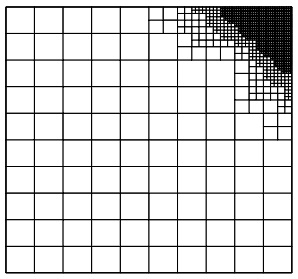
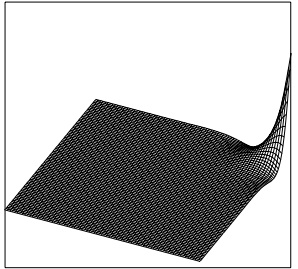
Poisson equation, composite mesh of 5 levels and solution (Number of cells = 1264).
The figure depicts the composite mesh of 5 levels, the coarse grid is 10 x 10 grids.
Note that the refined composite grid localizes and closes to the solution.
We present one example treating model in waterflooding simulation.
A one quarter five-spot, two phase, incompressible water injection problem is simulated.
Water is injected at a constant pressure in the top northwest corner, and a constant pressure is specified in the lower southeast corner. All other boundaries are no--flow. The initial water saturation is the critical saturation (i.e. it is considered to be zero).
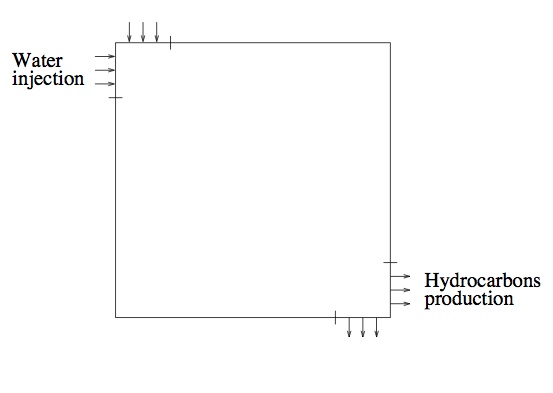
Water is injected at a constant pressure in the top northwest corner, and a constant pressure is specified in the lower southeast corner. All other boundaries are no--flow. The initial water saturation is the critical saturation (i.e. it is considered to be zero).
The coarse mesh is (10x 10) grids, and four levels of refinement are used. The figures show the water saturation contours and the composite grid at time 34 and 93 days. Note that the location of the refined area tracks the shock front quite closely during the time. One can remark also that the number of cells in the composite grids is far less then the number of cells in the finest grid (80x80 meshes).
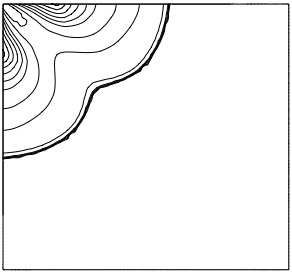
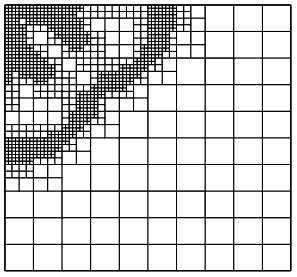
Water saturation contours and composite grid for
the Corner example, time = 34.0 days, number of cells = 105.
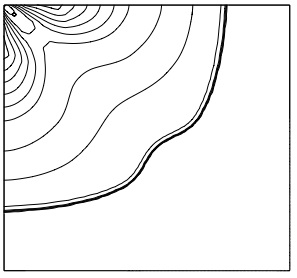
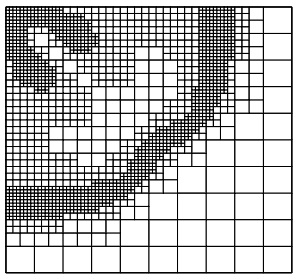
Water saturation contours and composite grid for
the Corner example, time = 93.0 days, number of cells = 1735.